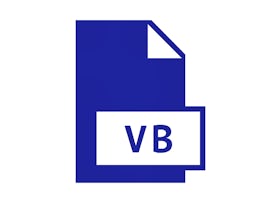This course focuses on advanced, yet essential concepts, techniques, and algorithms needed for understanding and designing modern wireless communication systems. You will begin this course by exploring the basics of wireless channels, followed by the need for multi-antenna systems. You will further learn about the two seminal multi-antenna technologies: MIMO and massive MIMO. The first is the basis for 4G systems, and the second is the same for 5G systems. You will also learn the multiple access techniques like orthogonal frequency division multiplexing (OFDM) and non-orthogonal multiple access (NOMA) and the basics of mmWave communications .


Empfohlene Erfahrung
Was Sie lernen werden
Explain the fundamentals of modern wireless communication, such as 4G and 5G systems.
Describe the essential theories related to their critical technical advancements related to 5G.
Comprehend the challenges in realizing them and the way forward.
Kompetenzen, die Sie erwerben
- Kategorie: A basic understanding of matrices and probability
- Kategorie: MATLAB programming skills
Wichtige Details

Zu Ihrem LinkedIn-Profil hinzufügen
15 Aufgaben
Erfahren Sie, wie Mitarbeiter führender Unternehmen gefragte Kompetenzen erwerben.


Erwerben Sie ein Karrierezertifikat.
Fügen Sie diese Qualifikation zur Ihrem LinkedIn-Profil oder Ihrem Lebenslauf hinzu.
Teilen Sie es in den sozialen Medien und in Ihrer Leistungsbeurteilung.

In diesem Kurs gibt es 13 Module
This module provides an overview of the course content and structure. In this module, you will learn about the different course elements. In this module, you will get acquainted with your instructor and get an opportunity to introduce yourself and interact with your peers.
Das ist alles enthalten
3 Videos1 Lektüre1 Diskussionsthema
In this module, you will learn about the basics of wireless communication. We will try to answer a few questions, such as why wireless and what are the applications of different generations of wireless technologies. The module also discusses the system model for a wireless channel which will form the foundation for all mathematics carried out in this course.
Das ist alles enthalten
9 Videos5 Lektüren2 Aufgaben1 Diskussionsthema
In this module, you will learn about multi-antenna wireless systems. The module will discuss different antenna configuration setups, such as the single-input multiple-outputs (SIMO), multiple-input single-output (MISO), and the multiple-input multiple-outputs (MIMO) . You will learn how to derive the bit-error rate of a multi-antenna system. This module will also discuss various receive combining techniques.
Das ist alles enthalten
5 Videos1 Lektüre
This module focuses on the capacity analysis for a multi-antenna system. You will learn how to calculate the capacity of single-input single-output (SISO), single-input multiple-output (SIMO), multiple-input single-output (MISO), and multiple-input multiple-output (MIMO) systems.
Das ist alles enthalten
4 Videos2 Lektüren2 Aufgaben1 Diskussionsthema
This module focuses on how received signals are demodulated with and without the channel state information and which kind of receiver performs well under different scenarios. You will also learn about the different channel assumptions, such as fixed channel, no channel information at the transmitter/receiver, slow-fading channel, and fast-fading channel.
Das ist alles enthalten
3 Videos1 Lektüre1 Diskussionsthema
This module will focus on ways to increase a cellular network’s overall throughput. The module analyses the spectral efficiency for different configurations of cellular networks, for example, single/multiple-antenna at the base station, single/multiple users in a cell, and two-cell/multiple-cell in a cellular network . You will gain insights into which network configuration best suits maximizing the area throughput. The impact of the increase in antenna/users/cells will be discussed in detail, with spectral efficiency as the metric. The module will consider different channel settings, such as line-of-sight and non-line-of-sight. Also, you will learn how antenna placement affects channel modeling.
Das ist alles enthalten
7 Videos3 Lektüren2 Aufgaben
In this module, you will work on the first project of the course. This project is based on the concepts covered in Week 1-Week 3. This module provides the tasks required to complete the project, instructions to complete and submit the assignment, and the criteria for how your instructor will grade your submission.
Das ist alles enthalten
1 Aufgabe
This module will act as a bridge between multi-user MIMO and massive MIMO systems. The module will explain when a multi-user MIMO system can be called a massive MIMO system. You will learn about different properties of massive MIMO, for example, channel hardening and favorable propagation. You will learn why channel estimation is an important aspect, mainly when you consider a massive MIMO system. The focus will be on how to calculate an estimate of channels with limited overhead. Further, it will discuss different ways to estimate channels, such as the minimum mean square error (MMSE), least-square (LS), semi-blind, and superimposed channel estimation techniques.
Das ist alles enthalten
6 Videos2 Lektüren2 Diskussionsthemen
In this module, you will learn the need to shift the operating frequency bands of the upcoming wireless systems towards the mmWave frequency bands. You will also learn the challenges involved in realizing such systems. Subsequently, you will learn to characterize the mmWave channel models, specifically the narrowband and wideband models. Later, you will be exposed to the key design consideration for modeling a mmWave system.
Das ist alles enthalten
3 Videos2 Lektüren
In this module, you will understand the role of beamforming in a wireless system. You will begin by learning the three beamforming architecture types: analog, digital, and hybrid. Subsequently, you will be exposed to modeling the uplink and downlink systems utilizing these beamforming architectures. Lastly, you will comprehend the beamforming objectives and learn a few selected algorithms for achieving the same.
Das ist alles enthalten
3 Videos2 Lektüren2 Aufgaben
In this module, you will learn how the channel property changes and causes an inter-symbol interference when we start realizing a wideband system, resulting in severe performance degradation. You will further learn how a multi-carrier modulated system can combat such degradation and pave the way for a widely accepted and commercialized technique known as “orthogonal-frequency division multiplexing (OFDM).” The module will discuss the OFDM system model and its performance characterization. Subsequently, the model will be extended for a multiple-input multiple-output (MIMO) system. You will also learn a few of the selected realization issues of the OFDM system.
Das ist alles enthalten
9 Videos5 Lektüren2 Aufgaben1 Diskussionsthema
In this module, you will learn how introducing an overlapping (i.e., a non-orthogonal) resource allocation can help in improving the overall throughput of the wireless system. The first part of the module will describe the basics of non-orthogonal multiple access (NOMA), considering a two-user scenario. The focus will be on developing an understanding of its transmitter and receiver structure and the constituent algorithms. Subsequently, the second part of the module will extend the idea to multi-user scenarios and multiple antenna cases. Lastly, this module will discuss a few of the other popular forms of NOMA.
Das ist alles enthalten
6 Videos3 Lektüren2 Aufgaben1 Diskussionsthema
In this module, you will work on the second project of the course. This project is based on the concepts covered in Week 4-Week 6. This project includes two parts: Part I and Part II. Part 1 is an auto-graded quiz. Part II is a staff-graded assignment, which will be evaluated by the instructor.
Das ist alles enthalten
1 Video2 Aufgaben
von
Empfohlen, wenn Sie sich für Electrical Engineering interessieren
Warum entscheiden sich Menschen für Coursera für ihre Karriere?





Neue Karrieremöglichkeiten mit Coursera Plus
Unbegrenzter Zugang zu 10,000+ Weltklasse-Kursen, praktischen Projekten und berufsqualifizierenden Zertifikatsprogrammen - alles in Ihrem Abonnement enthalten
Bringen Sie Ihre Karriere mit einem Online-Abschluss voran.
Erwerben Sie einen Abschluss von erstklassigen Universitäten – 100 % online
Schließen Sie sich mehr als 3.400 Unternehmen in aller Welt an, die sich für Coursera for Business entschieden haben.
Schulen Sie Ihre Mitarbeiter*innen, um sich in der digitalen Wirtschaft zu behaupten.
Häufig gestellte Fragen
Access to lectures and assignments depends on your type of enrollment. If you take a course in audit mode, you will be able to see most course materials for free. To access graded assignments and to earn a Certificate, you will need to purchase the Certificate experience, during or after your audit. If you don't see the audit option:
The course may not offer an audit option. You can try a Free Trial instead, or apply for Financial Aid.
The course may offer 'Full Course, No Certificate' instead. This option lets you see all course materials, submit required assessments, and get a final grade. This also means that you will not be able to purchase a Certificate experience.
When you purchase a Certificate you get access to all course materials, including graded assignments. Upon completing the course, your electronic Certificate will be added to your Accomplishments page - from there, you can print your Certificate or add it to your LinkedIn profile. If you only want to read and view the course content, you can audit the course for free.
You will be eligible for a full refund until two weeks after your payment date, or (for courses that have just launched) until two weeks after the first session of the course begins, whichever is later. You cannot receive a refund once you’ve earned a Course Certificate, even if you complete the course within the two-week refund period. See our full refund policy.


 enthalten
enthalten


